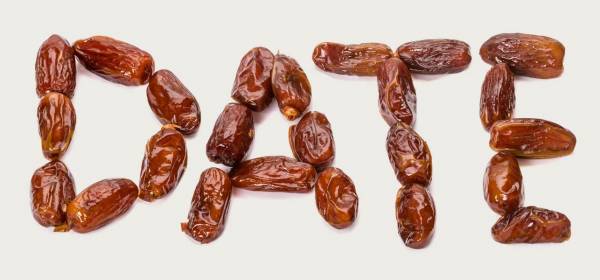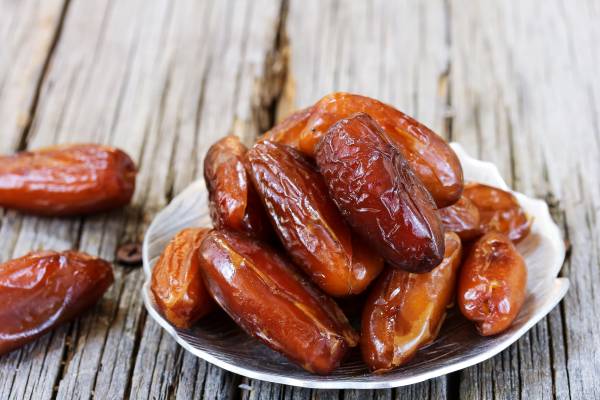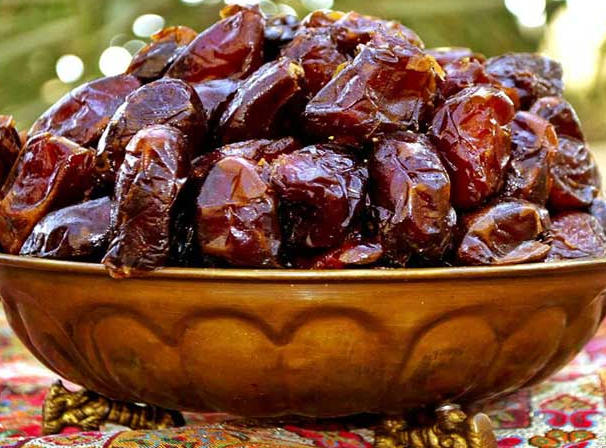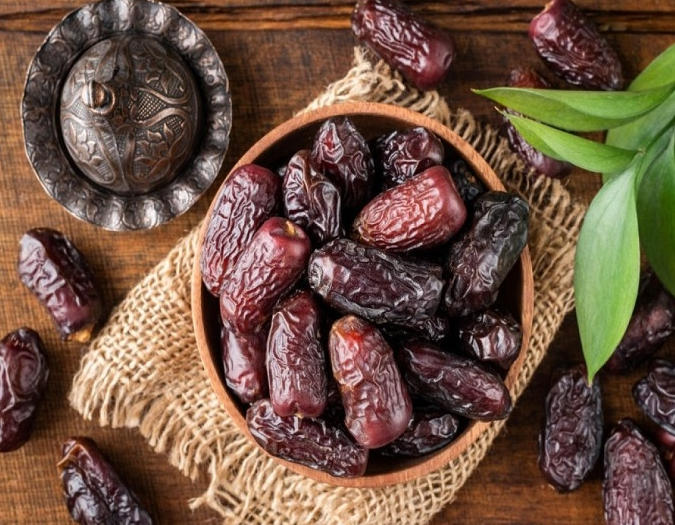Date fruits, commonly known as “dates,” are sweet and nutritious fruits that come from the date palm tree, which is native to the Middle East and North Africa. Dates have been a staple food in these regions for thousands of years and are still widely consumed today. They have a unique sweet taste and a chewy texture, making them a popular ingredient in desserts and snacks.
Dates are also known for their nutritional benefits. They are high in fiber, potassium, and antioxidants, and have been shown to have various health benefits, such as improving digestion and reducing the risk of chronic diseases. In addition, dates are a great source of energy and are often eaten as a quick and healthy snack.
In this article, we will explore the history, nutritional value, and health benefits of dates, as well as some delicious ways to incorporate them into your diet. Whether you are a fan of this delicious fruit or are just curious about its many benefits, this article will provide you with all the information you need to know about dates.

1. History of Date Cultivation
1.1 Origin and Domestication:
Dates are believed to have originated in the Middle East, specifically around the Persian Gulf region. They have been a staple food in this region for thousands of years. It is estimated that the domestication of dates occurred around 6,000-8,000 years ago. Evidence of date cultivation has been found in ancient Mesopotamia, Egypt, and the Indus Valley civilization. Dates played a significant role in these societies, not only as a source of nutrition but also as a symbol of prosperity and fertility.
1.2 Historical Spread and Trade:
As trade routes developed and expanded, the cultivation of dates spread to other regions, including North Africa, Southern Europe, and South Asia. The ancient Phoenicians, Greeks, and Romans were among the earliest civilizations to introduce dates to the Mediterranean region. Muslim conquests in the 7th and 8th centuries further facilitated the spread of date cultivation to North Africa and the Iberian Peninsula. In the 18th and 19th centuries, European colonizers and explorers brought date palms to the Americas, where they were introduced to countries such as Mexico, the United States, and Brazil.
1.3 Modern Cultivation Practices:
Today, date cultivation is a significant agricultural industry in many countries, particularly in the Middle East and North Africa. Advances in agricultural technology and modern farming practices have enabled the large-scale production of dates. Some of these practices include the use of genetically improved date palm varieties, efficient irrigation systems, and sustainable farming techniques to optimize yield and quality. In addition, innovations in harvesting, processing, and packaging have improved the shelf life and marketability of dates. These advancements have contributed to the continued growth and global popularity of dates as a nutritious and versatile food.

2. Varieties of Dates
2.1 Major Date Varieties:
There are over 2,000 varieties of dates, but only a handful are commonly cultivated and consumed. Some of the major date varieties include Medjool, Deglet Noor, Barhi, Zahidi, Ajwa, Khadrawy, and Halawy. Each variety has distinct characteristics in terms of size, color, texture, and flavor. Some are more suitable for fresh consumption, while others are better suited for drying or processing.
2.2 Characteristics and Flavor Profiles:
Different date varieties exhibit unique characteristics and flavor profiles. For example, Medjool dates are known for their large size, soft texture, and rich, caramel-like flavor. In contrast, Deglet Noor dates are smaller, firmer, and have a milder, honey-like taste. Barhi dates are unique due to their round shape and distinct crunchy texture when fresh, but they become soft and chewy when dried. Zahidi dates are golden in color, with a firm texture and a nutty, buttery flavor. Ajwa dates, a popular variety in Saudi Arabia, are small, dark, and chewy, with a mildly sweet flavor. Khadrawy dates are characterized by their soft, sticky texture and a balanced sweetness, while Halawy dates are small, soft, and extremely sweet.
2.3 Commercial Production and Distribution:
The commercial production of dates varies based on the region and the specific varieties in demand. The Middle East and North Africa are the primary regions for date production, with countries such as Egypt, Iran, Saudi Arabia, and Tunisia leading in terms of output. The United States, particularly California, is another significant producer of dates, primarily focusing on the Medjool and Deglet Noor varieties. Distribution of dates occurs through a variety of channels, including local markets, specialty food stores, and online retailers. The global date market continues to grow, driven by increased awareness of the health benefits of dates and their versatility in culinary applications.

3. Nutritional Content of Dates
3.1 Macronutrients:
Dates are a dense source of energy, primarily in the form of carbohydrates. They are high in natural sugars, such as glucose, fructose, and sucrose, which provide a quick and sustained source of energy. Dates also contain a modest amount of dietary fiber, which is important for maintaining digestive health and regulating blood sugar levels. While dates are low in protein and fat, they still provide small amounts of these essential macronutrients.
3.2 Micronutrients:
Dates are rich in various vitamins and minerals, making them a valuable addition to a healthy diet. They are an excellent source of potassium, which is essential for maintaining proper fluid balance, muscle function, and nerve signaling. Dates also provide significant amounts of magnesium, which is important for bone health, nerve function, and energy production. Other minerals found in dates include calcium, phosphorus, iron, and zinc. In terms of vitamins, dates contain notable amounts of vitamin B6, niacin, riboflavin, and thiamine, which are crucial for metabolic processes, nervous system function, and red blood cell production. They also contain small amounts of vitamin A, vitamin K, and folate.
3.3 Phytochemicals and Antioxidants:
Dates are a rich source of various phytochemicals and antioxidants, which are natural plant compounds that offer numerous health benefits. Some of the most important antioxidants found in dates include carotenoids, flavonoids, and phenolic acids. These compounds have been shown to possess anti-inflammatory, anti-cancer, and anti-diabetic properties, as well as the ability to protect against oxidative stress, which is a key contributor to many chronic diseases. Additionally, dates contain tannins, which have potential anti-inflammatory and anti-infective properties. The concentration of these beneficial compounds varies among different date varieties and can be influenced by factors such as growing conditions and the degree of ripeness.

4. Health Benefits of Dates
4.1 Digestive Health:
Dates are rich in dietary fiber, which promotes regular bowel movements and helps prevent constipation. The soluble fiber in dates can also help lower cholesterol levels and regulate blood sugar levels by slowing down the absorption of glucose in the intestines. Additionally, dates contain natural prebiotics, which can promote the growth of beneficial gut bacteria, thus supporting overall digestive health.
4.2 Heart Health:
The potassium and magnesium found in dates contribute to maintaining healthy blood pressure levels and supporting proper heart function. Additionally, the dietary fiber and antioxidants in dates can help lower LDL cholesterol levels, reducing the risk of atherosclerosis and heart disease.
4.3 Blood Sugar Regulation:
Although dates are high in natural sugars, their low glycemic index and high fiber content can help regulate blood sugar levels, making them a suitable snack for people with diabetes when consumed in moderation. The antioxidants in dates may also help protect against diabetic complications by reducing oxidative stress and inflammation.
4.4 Anti-Inflammatory Properties:
Dates contain various phytochemicals and antioxidants, such as flavonoids and phenolic acids, which exhibit anti-inflammatory properties. These compounds can help reduce inflammation in the body, potentially lowering the risk of chronic diseases such as heart disease, diabetes, and cancer.
4.5 Antimicrobial and Antiviral Effects:
Some studies have shown that date extracts possess antimicrobial and antiviral properties, which may help protect against certain infections. The tannins in dates may also contribute to these protective effects.
4.6 Cancer Prevention:
The antioxidants in dates, including carotenoids and phenolic compounds, have been shown to possess anti-cancer properties, potentially reducing the risk of certain types of cancer. These compounds can help neutralize harmful free radicals, inhibit the growth of cancer cells, and reduce inflammation.
4.7 Brain Health and Cognitive Function:
Dates contain nutrients and antioxidants that may promote brain health and protect against neurodegenerative diseases, such as Alzheimer’s disease. The vitamin B6, magnesium, and potassium in dates can support proper brain function, while the antioxidants can help reduce inflammation and oxidative stress in brain cells.
4.8 Pregnancy and Lactation:
Dates are often recommended as a healthy snack for pregnant women due to their high nutritional content and potential health benefits. Some studies suggest that consuming dates during the last few weeks of pregnancy may help facilitate cervical dilation and reduce the need for labor induction. Additionally, dates provide essential nutrients, such as iron and calcium, which are important for both the mother’s and the baby’s health during pregnancy and lactation.

5. Cultural Significance of Dates
5.1 Role in Middle Eastern Cuisine:
Dates have played a central role in the culinary traditions of the Middle East for centuries. They are used in various dishes, both sweet and savory, and often accompany main meals or are consumed as a snack or dessert. In many Middle Eastern countries, dates are used to make traditional pastries, jams, and syrups, as well as to flavor meat dishes and stews. Dates are also commonly stuffed with nuts, cheese, or other fillings and served as a delicacy during special occasions or celebrations.
5.2 Religious Significance:
Dates hold religious significance in several cultures, particularly in Islam. Muslims traditionally break their fast during the month of Ramadan with dates, as it is believed that the Prophet Muhammad did so. This practice not only has symbolic importance but also provides an immediate source of energy and essential nutrients after a long day of fasting. In addition, dates are mentioned several times in the Quran and are considered a sacred fruit with numerous health benefits. Due to their religious significance, dates are often consumed during important Islamic celebrations and events, such as Eid al-Fitr and Hajj.
5.3 Traditional Medicinal Uses:
In traditional medicine systems, such as Unani and Ayurveda, dates have been used for their various therapeutic properties. They have been prescribed as a remedy for numerous ailments, including digestive issues, respiratory problems, fever, and general weakness. Dates are also believed to possess aphrodisiac properties and are used in traditional medicine to improve sexual health and fertility. While some of these uses are supported by scientific research, others are based on anecdotal evidence and cultural beliefs.

6. Consumption and Storage of Dates
6.1 How to Select and Purchase Dates:
When buying dates, look for those that appear plump, glossy, and free from mold or excessive wrinkling. The texture of dates can vary depending on the variety, with some being soft and moist, and others firmer and drier. Dates can be purchased in various forms, such as fresh, dried, or pitted. They are often available in bulk or pre-packaged in supermarkets, health food stores, or online retailers. It’s essential to choose high-quality dates to ensure the best flavor, texture, and nutritional benefits.
6.2 Preparation and Serving Ideas:
Dates can be consumed in numerous ways, both as a standalone snack or as an ingredient in various recipes. They can be eaten fresh or dried, and can be added to smoothies, oatmeal, yogurt, or salads for natural sweetness and added texture. Dates are also a popular ingredient in baked goods, such as cookies, cakes, and energy bars, and can be used as a natural sweetener in place of sugar or other sweeteners. Additionally, dates can be stuffed with nuts, cheese, or other fillings to create a delicious and nutritious appetizer or dessert.
6.3 Storage and Preservation Techniques:
To maintain their freshness and quality, dates should be stored properly. Fresh dates can be kept at room temperature for several weeks if stored in an airtight container or sealed plastic bag. For longer-term storage, fresh dates can be refrigerated for up to six months, while dried dates can be refrigerated for up to a year. Both fresh and dried dates can also be frozen for even longer storage, with their quality being maintained for up to two years when properly stored in airtight containers or freezer bags. When storing dates, it’s important to keep them away from strong odors, as they can absorb the smells and become tainted.



One Comment